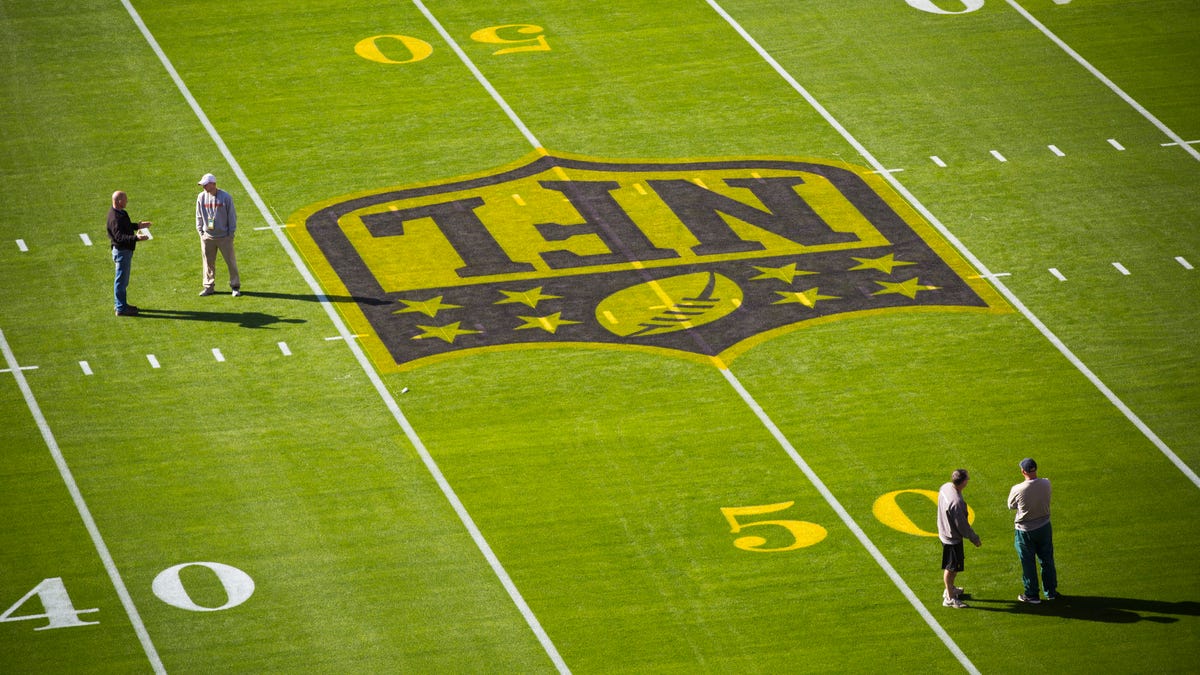This VR headset takes a hard look at brain injuries
Concussions are a fact of life for athletes. Sideline VR tech could help determine if someone needs medical attention.

Virtual reality could help in diagnosing something as elusive as a concussion.
SyncThink, which develops eye-tracking technology for VR headsets, says its Eye-Sync device can indicate head-related injury symptoms in under a minute. On Wednesday, it announced that it's partnering with database company Couchbase to enable offline capabilities for Eye-Sync.
A brain injury compromises a person's ability to predict incoming information and to pay attention. To assess for possible injury, a football player on the sidelines, fresh off a collision, or a soldier who's taken a blow during training puts on the Eye-Sync headset -- a modified Samsung Gear VR equipped with a Samsung Galaxy S7 -- and watches a red dot move in a circle.
The device then measures the person's eye motion and characterizes how well it synchronizes with the moving target. A clinician uses a Galaxy Tab S2 to monitor the user during the assessment and to receive an automated analysis. If the person's eye motion is not synchronized, that could indicate an ocular-motor impairment, a common component of concussion.
VR could aid in evaluating ocular-motor impairments, a common component of concussion.
"The tools that clinicians have on the sidelines are largely subjective," said Dan Beeler, CTO of SyncThink. "For ocular-motor tests in particular, this is a tool that can objectively and quickly provide a piece of information about an ability that is critical for that player to avoid a secondary injury."
It's a job opportunity for virtual reality, computer-generated simulations of 3D environments that people can experience by strapping on what looks like a diving mask, but with a smartphone screen inside. That VR headset feeds images to the user's eyes, allowing them to interact with a setting in a seemingly realistic way. Virtual reality has been largely confined to gaming while it awaits a bigger breakthrough to consumers at large, though it also has some health care applications, from treating phobias to potentially helping stroke victims regain motor function.
VR technology may provide some clarity to identifying concussions, which can be tricky to pinpoint because there might not be any visible signs of injury or obvious symptoms. For instance, a person with a concussion doesn't necessarily pass out.
Oculogica is another company developing eye-tracking technology for detecting brain injuries, though its EyeBox device hasn't yet received FDA clearance. Eye-Sync was granted FDA clearance in 2016.
SyncThink's devices can work with or without a network connection, but the offline capabilities that come with the Couchbase partnership allow users to run tests, capture results and then automatically sync new data with a server when connectivity improves. A typical scenario could involve an athletic trainer gathering data and remotely conferring with a team physician.
The need for better solutions for identifying brain injuries is great. Nearly 50,000 people died as a result of traumatic brain injury in 2013, the Centers for Disease Control reports, and traumatic brain injury was a diagnosis in more than 282,000 hospitalizations and 2.5 million emergency department visits.
Sports neurologist Frank Conidi says VR tests like the one used in Eye-Sync should always be done in conjunction with physical and neurological examinations, which might involve analyzing a patient's balance and eye movement, among other things.
"These devices are useful as an add-on, especially in individuals who don't have advanced training -- such as medical degrees or athletic trainer degrees -- to help in the diagnosis of concussion," said Conidi, who is also CEO of the Seeing Stars Foundation, a nonprofit that supports research on sports-related concussions and neurological injuries. "People need to also be careful, and companies need to be careful, about not trying to dumb down concussion diagnosis too much, because none of this is perfect."
Beeler said Eye-Sync does require the supervision of a physician to make a proper evaluation.
"We're not supplanting the role of the physician," he said. "They have a really critical component to this. But we're providing an objective tool for them to make a better assessment."
Before selling its product, SyncThink confirms that the buyer is either a physician or under the direction of a physician.
Traumatic brain injuries are a concern for athletes. The NFL, for instance, faces scrutiny over high concussion injury rates and evidence linking brain injuries from play to CTE, a degenerative brain disease. Last week, New Orleans Saints tight end Coby Fleener joined SyncThink's athlete advisory board.
The NBA might also be seeing the benefits of VR in analyzing brain health. The Golden State Warriors are the latest pro team to adopt Eye-Sync.
The technology is also being rolled out in collegiate athletics programs in places such as Stanford University, the University of Texas and Iowa State University.
Ravi Mayuram, senior vice president of products and engineering at Couchbase, said the partnership with SyncThink is indicative of a trend in health care.
"This is precisely where the entire engagement movement is moving toward," he said, "where the application comes to you as opposed to you having to go find it."
Rebooting the Reef: CNET dives deep into how tech can help save Australia's Great Barrier Reef.
The Smartest Stuff: Innovators are thinking up new ways to make you, and the things around you, smarter.

